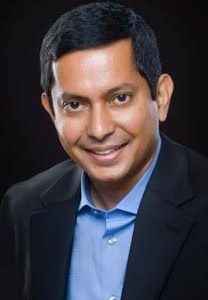 Studies show that as companies become more prominent, leaders become more distant from customers. They spend more time managing the organization and investors, less time with customers. They believe their role ends with training employees. A 2017 HBR survey of 1,000 CEOs found that, on average, CEOs spend 10 percent of their time with clients, 7 percent with suppliers and the rest with internal groups. In other words, unless you’re a big customer, you likely won’t get any attention from the CEO or his/her leadership team. The C-Suite is very isolated from its customers—at companies that ultimately fail.
Studies show that as companies become more prominent, leaders become more distant from customers. They spend more time managing the organization and investors, less time with customers. They believe their role ends with training employees. A 2017 HBR survey of 1,000 CEOs found that, on average, CEOs spend 10 percent of their time with clients, 7 percent with suppliers and the rest with internal groups. In other words, unless you’re a big customer, you likely won’t get any attention from the CEO or his/her leadership team. The C-Suite is very isolated from its customers—at companies that ultimately fail.
To lead a thriving, customer-focused company, the CEO has to spend time with customers. Training employees and changing the mission statement don’t change the company’s focus. Only CEOs who meet with customers, make them a priority and understand them from their own direct experience can champion the change and carry others along with them.
But let’s step back a moment… Why is a focus on customers so critical? We all know disruption roils the markets and challenges even the most successful companies to keep their footing—let alone thrive. Conventional wisdom tells us that disruption is driven by technology, but the truth is that disruption is driven by changing customer needs, which may be facilitated by technology. Organizations that successfully ride these waves of disruption are those that keep their focus on customers by understanding, anticipating and gratifying their customers’ ever-changing needs.
This may seem basic, but it is more challenging than it seems. The very structure of most companies fails to support a focus on customers. Naturally, leaders concentrate on strategies that maximize their compensation, and most U.S. executives’ rewards are tied to financial metrics. Yet, what it takes to boost stock prices is rarely the same as what it takes to meet customer needs.
When entrepreneurs start a company, they know that their success—including their venture capital—is tied directly to customer acceptance, so, naturally, pleasing customers is their focus. But as companies grow, investors tie executive compensation to short-term share price growth. That’s how Tesla proposed compensating Elon Musk according to market valuation or share price growth, with no mention of customers. Though the implicit assumption is that Musk will have to get customer acceptance to grow the company, the reality is different. Musk is battling with Tesla’s short-sellers instead of focusing on customers.
History shows that increasing incentives too much can lead to bad behavior. Wells Fargo compromised on customer trust to improve stock valuation. GE spent $24 billion on stock buybacks between 2016 and 2017 to increase its share prices and got into a cash crunch in 2018. When executives focus on short-term stock prices, the long-term health of the business suffers. Firing everyone in top management and replacing them with entrepreneurs is not the solution. Even entrepreneurs like Mark Zuckerberg seem to lose focus on their customers when their companies go public. Incentives, organization structure, culture, hiring and training—all have to be changed to bring an organization’s focus back to customers, and that shift has to start at the top, with how executives are incentivized.
Investors win in the long run when customers are happy, because their long-term gains are tied to continuing customer satisfaction. Ask any small-business owner. Small-business owners know their survival depends on their ability to keep customers happy. Some large companies have shown that concentrating on customer needs is good for the shareholders; the two interests are tightly linked in the long term. Customer-pleasing strategies are not always immediately profitable, however. For example, Amazon lost money with its Prime service at first, though in the long term, the program pleased both investors and customers. If the company had concentrated on short-term profits, Amazon would probably not be where it is today.
If executive compensation is linked to short-term profits, neither customers nor shareholders will be satisfied. This is why CEO pay, too, should be linked to customer satisfaction and the company’s long-term growth.
Great leaders make time for their customers and learn from customer interactions, utilizing customer feedback analytics. Hamdi Ulukaya, the Chobani CEO, stands outside the SoHo store to listen to his customers. The same is true for small-business owners; they know you can’t run a small business while hiding in a back office.
So, what’s the answer? Tying leaders’ compensation to metrics like customer feedback on social media, repeat customer rate and growth in the user base could get leaders focused on customers. This should, of course, be balanced with financial metrics. But with their compensation dependent upon customer satisfaction, leaders would devise strategies that deliver on customer needs and truly harness the power of their organization behind them.
Read more: Horst Schulze: Customer Expectations Are The Same Everywhere

Chief Executive Group exists to improve the performance of U.S. CEOs, senior executives and public-company directors, helping you grow your companies, build your communities and strengthen society. Learn more at chiefexecutivegroup.com.
0

1:00 - 5:00 pm
Over 70% of Executives Surveyed Agree: Many Strategic Planning Efforts Lack Systematic Approach Tips for Enhancing Your Strategic Planning Process
Executives expressed frustration with their current strategic planning process. Issues include:
Steve Rutan and Denise Harrison have put together an afternoon workshop that will provide the tools you need to address these concerns. They have worked with hundreds of executives to develop a systematic approach that will enable your team to make better decisions during strategic planning. Steve and Denise will walk you through exercises for prioritizing your lists and steps that will reset and reinvigorate your process. This will be a hands-on workshop that will enable you to think about your business as you use the tools that are being presented. If you are ready for a Strategic Planning tune-up, select this workshop in your registration form. The additional fee of $695 will be added to your total.

2:00 - 5:00 pm
Female leaders face the same issues all leaders do, but they often face additional challenges too. In this peer session, we will facilitate a discussion of best practices and how to overcome common barriers to help women leaders be more effective within and outside their organizations.
Limited space available.

10:30 - 5:00 pm
General’s Retreat at Hermitage Golf Course
Sponsored by UBS
General’s Retreat, built in 1986 with architect Gary Roger Baird, has been voted the “Best Golf Course in Nashville” and is a “must play” when visiting the Nashville, Tennessee area. With the beautiful setting along the Cumberland River, golfers of all capabilities will thoroughly enjoy the golf, scenery and hospitality.
The golf outing fee includes transportation to and from the hotel, greens/cart fees, use of practice facilities, and boxed lunch. The bus will leave the hotel at 10:30 am for a noon shotgun start and return to the hotel after the cocktail reception following the completion of the round.